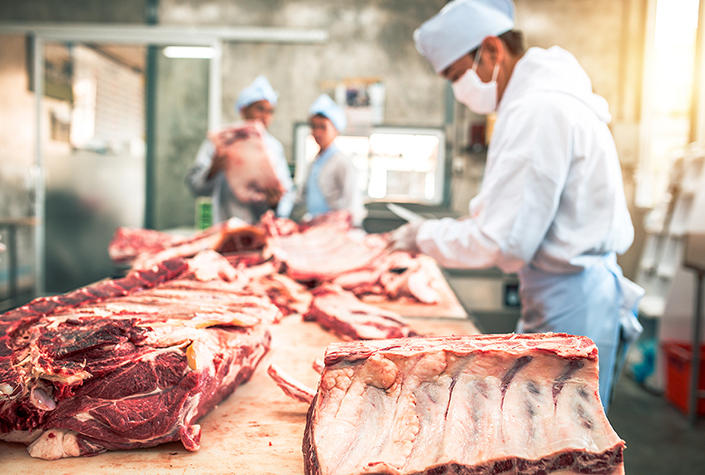Faster food: Medical breakthrough could improve global beef production

A recent research breakthrough in human medicine could help a Texas A&M Department of Animal Science researcher find a way to increase beef production to help meet the demands of global population growth.
Bos indicus cattle breeds are very important to global beef production due to their adaptability to tropical and sub-tropical climates, including those found in Texas and other southern U.S. states.
But a big challenge or disadvantage for Bos indicus, or Brahman, cattle is that their overall reproductive performance is inferior to that of Bos taurus cattle breeds such as Angus and Hereford, which predominate in the Midwest and Northern states.
Rodolfo Cardoso, assistant professor and reproductive physiologist in the Department of Animal Science of the College of Agriculture and Life Sciences, is leading a four-year project funded by a $500,000 grant from the U.S. Department of Agriculture’s National Institute of Food and Agriculture. Among the collaborators are Gary Williams, Texas A&M AgriLife Research professor emeritus, and graduate students Viviana Garza and Sarah West.
Cardoso said revolutionary advances in neuroendocrine research have defined the mechanisms controlling the secretion of gonadotropin-releasing hormone, GnRH. The new insights, he believes, can help his team determine neuroendocrine differences between Bos taurus and Bos indicus genotypes of cattle and use that to enhance reproductive efficiency in Bos indicus-influenced cattle.
“Very recently, there was an important breakthrough on the understanding of how the secretion of GnRH is regulated in rodents and primates,” he said. “Our preliminary research suggests that similar mechanisms are also important in cattle and could explain the differences in reproductive performance between Bos taurus and Bos indicus animals.
“If confirmed, those findings can have practical implications to reproductive management of Bos indicus cattle. In human medicine, several pharmacological strategies to improve fertility in women have already been developed based on these novel findings.”
As many as 70 percent of the world’s cattle are raised in tropical and sub-tropical regions, and approximately 30 percent of U.S. beef herds have some Bos indicus influence, particularly in the southern and southeastern regions.
One major challenge is that Bos indicus and Bos indicus-influenced cattle reach puberty markedly later than Bos taurus breeds. That late puberty essentially means one less calf in a cow’s lifetime and also presents challenges when breeders try to synchronize estrus cycles for the annual breeding season.
Cardoso said typically Bos taurus heifers reach puberty at 10-12 months, whereas Bos indicus heifers often won’t reach puberty until 15-17 months.
“That five-month delay makes them not reach puberty in time for their first breeding season, and so they have to wait another whole year to be bred and have their first calf,” Cardoso said.
With more than 4 million replacement beef heifers entering the U.S. cow herd annually, the difference between having a calf when the heifer is 2 versus 3 years old can make a big difference in beef production. In Texas and Florida, less than 50 percent of beef heifers reach the goal of calving at 2 years old due to the Bos indicus influence.

